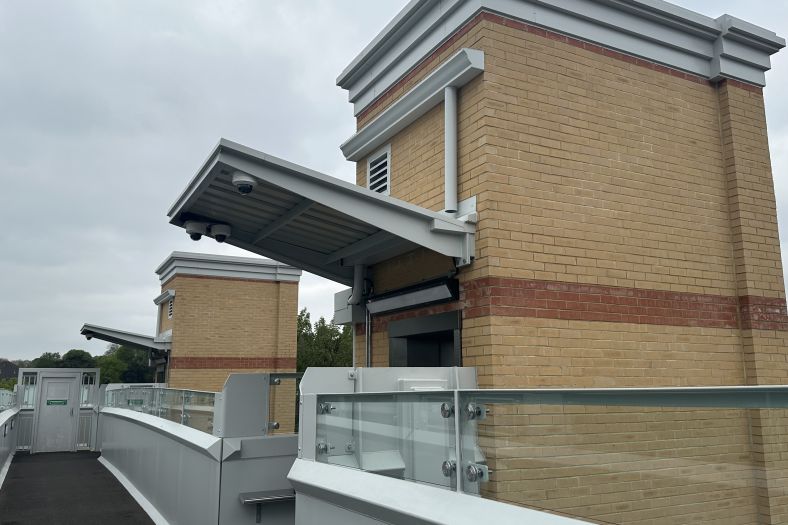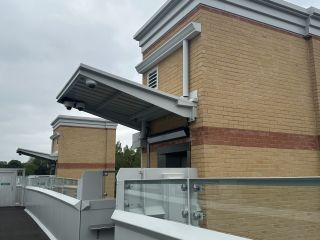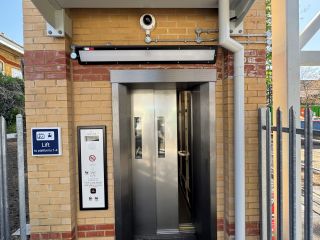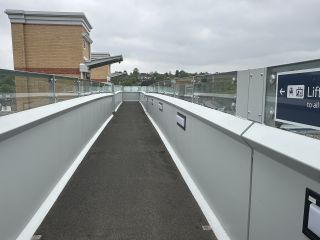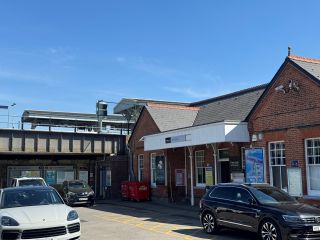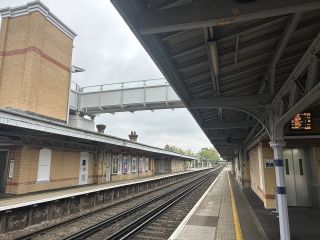Case Study: Transforming accessibility at Shortlands railway station
1Shortlands Station becomes the latest station in South East London to benefit from accessibility upgrades with the installation of three new passenger lifts from Stannah.
The project focused on installing new passenger lifts to network specifications, enabling seamless access from the station entrance to each platform, as part of a wider project and ongoing effort to improve accessibility across Network Rail’s stations.
Work
Stannah Lifts worked with South Eastern Railway (SER) – Southeastern and Network Rail Kent route - and civil engineering contractors, BAM Nutall, to ensure seamless integration of three 11-person passenger lifts to SER specifications, providing step-free access to each platform.
In partnership with the Department for Transport’s ‘Access for All’ scheme (AfA), an investment of over £8 million also funded the construction of a new emergency staircase, a footbridge, new CCTV cameras for improved security and modern lighting to enhance visibility for visitors.
These improvements mark a major milestone in transforming the station into an inclusive environment, benefitting passengers with reduced mobility, wheelchair users, families with pushchairs and anyone requiring step-free access.
Challenges
Stannah faced several logistical challenges due to the restricted size of the site and limited access, which made material deliveries particularly difficult. At the start of the lift installations, the footbridge had not yet been installed, requiring a crane to directly carry materials onto the narrow platforms.
Ensuring safety and minimising disruptions to rail operations and passengers were top priorities throughout the project. Therefore, this required close coordination with Network Rail and BAM Nutall to plan minimal rail line blockages, delivery timings and safe access solutions.
Another challenge was maintaining full station functionality and public access. With the station remaining fully operational during construction, material deliveries by crane had to be carefully scheduled during off-peak hours to protect the safety of commuters.
This resulted in the car park being temporarily closed overnight, minimising disruptions to commuters and allowing safe crane operations to lift materials onto platforms 2 and 3. Stannah was able to make deliveries for Lift 1 into the main compound, which was more accessible.
The narrow width of the platforms also presented a design challenge. Standard lift sizes would not fit within the space available without breaching the required two-metre clearance on each side. As a result, the lifts had to be custom-designed to meet space constraints.
The Solution
Stannah Lifts proposed the installation of three 11-person passenger lifts, each featuring a car size of 1100mm wide by 1750mm deep to accommodate the narrow platforms.
To improve the flow and efficiency of passenger movement, the lifts were designed with through-car entrances, allowing doors to open on both sides. This solution eases congestion by enabling passengers to enter and exit from opposite ends of the lift car, reducing wait times and improving accessibility during peak periods.
To minimise disruption to station operations, all lift installations were carefully scheduled and carried out at once. This coordinated approach limited the duration of the installation, helping the station to remain accessible throughout the installation process.
Results
Shortlands station now offers greater convenience for wheelchair users, those with limited mobility or people travelling with heavy luggage, bicycles and pushchairs. The energy-efficient hydraulic lift system with the bespoke car sizing helped to address the space constraints on the platforms.
Peter Stapleton, Southeastern Railway’s Head of Facilities said: “This project demanded a high level of coordination between partners due to the narrow platforms, operational site and limited access for deliveries. Through close collaboration, Stannah were able to successfully navigate the logistical hurdles and install passenger lifts within tight and narrow enclosures, enabling step-free access.”
The new passenger lifts now provide step-free access from the station’s main entrance to each platform, linked by a new footbridge. Prior to these improvement works, access was unavailable to wheelchair users. One lift, located in the car park, provides direct access to the footbridge, while the other two lifts are positioned on the bridge to serve each platform. This integrated design provides step-free access that now allows passengers to move easily between all areas of the station, supporting more inclusive and efficient travel.
Peter Ford, Project Manager, Major Projects Division of Stannah Lift Services, shares: “We’re proud to have enhanced accessibility for commuters at another station, and we continue to work with Network Rail to make more stations accessible for everyone. This project demanded close collaboration with BAM Nutall and Network Rail to coordinate material deliveries within tight space constraints, manage off-peak working hours and ensure the safety of passengers moving through the station. Thanks to the dedication of the entire team, we’ve successfully delivered another fully step-free station.”

